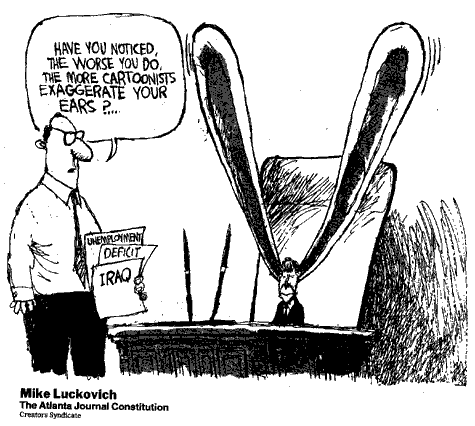![]()
Write us!
socialistviewpoint@pacbell.net
Not Union? John J. Sweeney Wants You!
By Charles Walker
Ever wanted to join a union, but weren’t in the right place to get signed up? Some pollsters’ reports would suggest that you are probably among the more than 40 million workers who would like to carry a union card, but are not since their workplace isn’t organized. That’s too bad, because—even given the shellacking that unions have taken in recent decades—union workers do earn more pay and have higher benefits than nonunion workers. Moreover, union workers can’t be fired as arbitrarily as by nonunion employers.
But are the 40 million workers who would like a union where they work also interested in joining a union not based on job-sites and dealing with workers’ bosses? John J. Sweeney and the rest of the top AFL-CIO leadership think so, and have announced a new union affiliate called Working America aimed at recruiting from the nation’s 40 million would-be trade unionists. The AFL-CIO’s optimism is based on tests the federation carried out in Seattle and Cleveland. “In Seattle, three people working for seven weeks signed up 1200 nonunion workers to join Working America…About half of the new members made contributions, labor leaders said, with those who contributed giving an average of $16.
In Cleveland, John Ryan of the labor council said of the new recruits, “We will engage them in making phone calls, writing letters, putting pressure on public officials to support a working families’ agenda.” In other words the new members will be urged to engage in a very legitimate function of labor unions, the pressuring of politicians to back labor issues.
But there’s something else on the mind of the federation’s chiefs that’s indicated by the comments of one of the plan’s academic advocates, Harvard labor economist Richard Freeman. “You can look at this as a way to influence the political system. For unions to move elections, they have to get these people involved.”
Since from the New Deal days to the present, being involved politically has meant for most unions being a junior partner to the Democratic Party’s agenda. That means that the new recruits will be expected to use their influence with fellow non-union workers to get Democratic Party politicians elected. There’s no evidence yet that the membership of the new AFL-CIO affiliate will discuss, debate and decide which issues to back or which politicians to stump for.
That their attitudes might differ from the federation’s doesn’t seem to have occurred to Sweeney and company, or if it has, perhaps it’s not thought to matter, since the union’s press release announcing the new formation doesn’t mention if the new members will have a voice or a vote in selecting New America’s leadership. How that plays out with the new members, remains to be seen. But at least at the local level, members of “regular” unions do have a vote and voice, though the ranks’ opinions are very much diluted at labor’s higher echelons.
One part of the plan for building the new union puts door-to-door visits by unionists at the heart of the organizing. The advantages of such an approach are obvious. Someone will make the appeal that’s in the same boat, someone that talks the same lingo, and hopefully, someone whose facial muscles are a bit more mobile and whose speech is livelier than that of John J. Sweeney, the federation’s most public advocate.
What will happen when the new recruits see that the politicians they have campaigned for directly or indirectly fail them, as Clinton did for example when he fought vigorously for NAFTA’s passage, or ended the Aid to Families With Dependent Children programs? Will they shrug it off, as easily as the federation’s leadership, and write it off as just politics.
Again, that remains to be seen. But if the new recruits are disappointed in the electoral and legislative results of their actions, perhaps it won’t matter that much to the federation’s honchos. We say that because we’re more than a bit suspicious of the timing of Sweeney’s new union project. We suspect that what Sweeney has in mind is to build a force that might tip the balance away from President Bush in 2004, and, if successful, will have fulfilled its main, if unstated, purpose.
Our suspicion is only bolstered by remarks about Working America that Sweeney made in Detroit the day after Labor Day. “And then we will draw from our frustration and our anger to organize the biggest political mobilization of working people in history to hold elected officials, including President Bush, accountable for their inaction on the trade and jobs crisis, and for the war the President has declared on working families and our unions since the day he took office.”
Of course Sweeney is right on target when he attacks Bush for his “war on working families.” But Sweeney is wrong not to take on the Democratic Party for its own war on working families, a war that every Democratic President in modern times has waged, though not always under conditions of his choosing. But Sweeney’s keeping quiet about the Democrat’s duplicity is not an oversight, an understandable mistake. Sweeney’s silence is part of a cover-up scheme hatched to cover-up organized labor’s own refusal to mobilize labor’s ranks, both organized and unorganized, in defense of their deepest interests as a social class. It’s hard to see how any mobilization of American workers that stops short of breaking free of the political chains called the Republican and Democratic Parties, can succeed in protecting America’s working families from the ravages of the crisis now wracking the worldwide profit system, capitalism and imperialism.

Write us
socialistviewpoint@pacbell.net